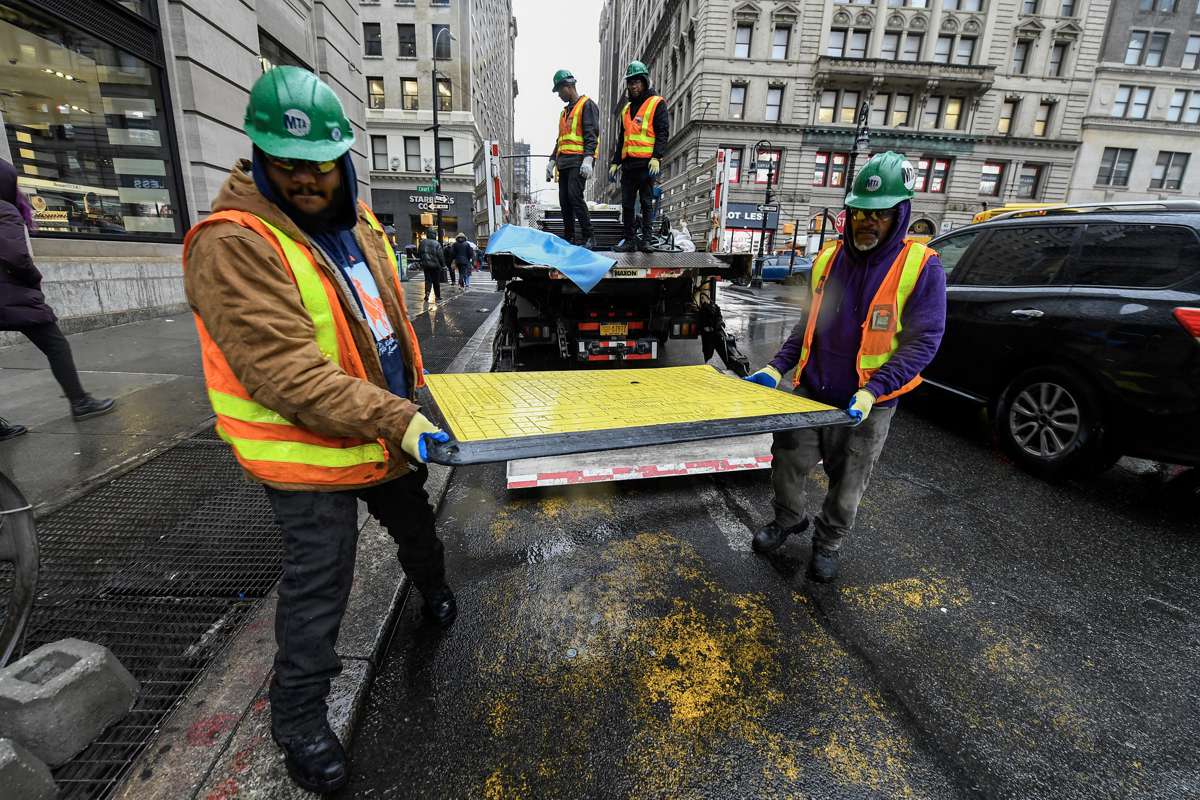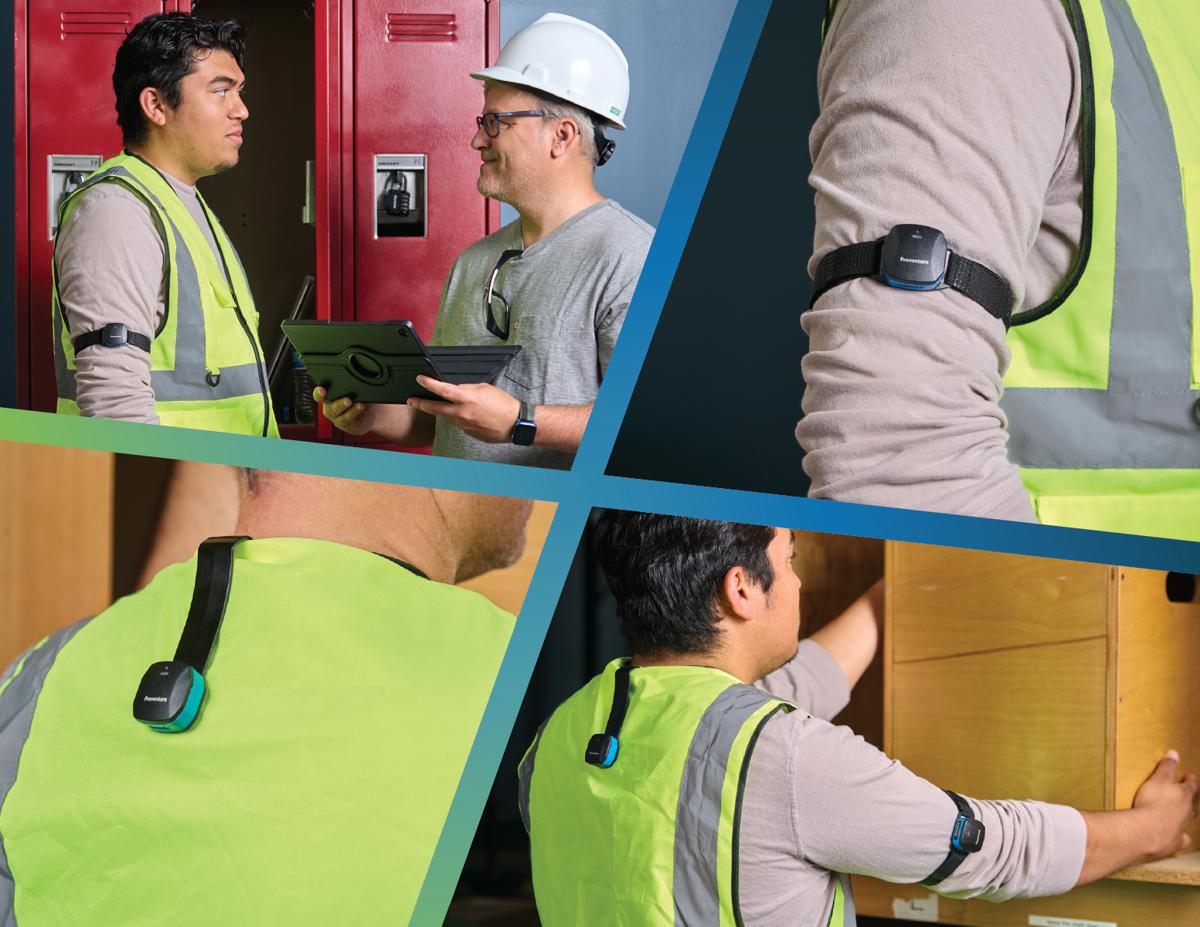Tackling Skin Problems in the Construction Industry
If you work in the construction industry, chances are you’re on your feet all day and constantly using your hands. But you might not always take the time to look after your skin.
Your work will often expose your skin to potentially harmful chemicals and materials. It takes place in often harsh outdoor conditions and sometimes requires the use of heavy-duty PPE. All of this can lead to serious skin conditions.
HSE data found that occupational skin diseases are some of the most common work-related health issues reported. And considering 799,000 UK construction workers identify as self-employed, developing a skin condition as a result of your job can impact your finances if you have to take time off work because of it.
Here, foot and hand health expert Margaret Dabbs OBE, owner of Margaret Dabbs London and multiple renowned foot clinics, shares her hacks for keeping your hands and feet in tip-top condition if you work in construction.
Key findings
- Bad skin health can lead to pain, illness and an impact on your finances, particularly for self-employed workers.
- Occupational skin diseases are some of the most common work-related issues reported to the HSE.
- Dry, cracked skin on our hands and feet is a common issue, with 62% of UK consumers purchasing a product because it claims to treat dry skin.
- Issues such as hyperkeratosis, callouses and corns can arise if you don’t look after your foot health, leading to extreme pain.
- Contact dermatitis can be triggered through exposure to materials such as concrete. Once the allergy has been triggered, you will likely be susceptible to that material for the rest of your life.
- At least 100,000 new cases of skin cancer occur each year within the UK alone, with 44% of those diagnosed working within the construction industry.
- Solutions such as properly-fitting protective equipment, regular moisturisation and sunscreen application can limit damage to the skin for construction labourers.
Why should you look after your skin and hands?
Our skin is our largest organ and its condition is a good indicator of our overall health. It’s also our first defence against bacteria and germs. There’s a widespread stereotype that men, who make up 85% of the UK’s construction sector workforce, don’t look after their skin. But the global men’s personal care market was valued at over £24.4 billion in 2021 and is expected to grow by a further 8.7% by 2030, highlighting a real demand from the modern man for reliable and effective skincare.
Women are chronically underrepresented in the construction sector, with only 15% of all construction workers identifying as female and just 2% of those women working with tools. Many women in the industry find it difficult to source PPE that fits properly. Some have been forced to remove ill-fitting equipment to complete an intricate piece of work, thereby exposing their skin to irritants, or wear shoes that are multiple sizes too big for them.
If the skin on your hands or feet feels dry or irritated, watch out for splitting and open cuts. If left unsanitised and open to the air, cracks and cuts in your skin can let bacteria into your body, causing infection and illness. Infections can cause increased pain and limit your ability to focus on your work or even work at all.
If your feet regularly crack or bleed, covering them up with socks and thick work shoes is not enough – you need to treat the cause of this dry skin. By simply ignoring issues, you run the risk of getting a staph infection from the bacteria always present on the surface of your skin. If you’re working with soil, dust or metal objects during a project, be wary of cuts and cracks on your hands. The bacteria that cause the serious illness tetanus like to live in these areas.
Common construction conditions
Injuries are also a problem within the construction area, with many working in dangerous situations or with heavy-duty machinery. For instance, if you repeatedly use vibrating tools, such as chainsaws or pneumatic drills, for long periods, you may be at risk of hand-arm vibration syndrome (HAVS). It’s unknown how exactly the condition occurs, but it’s assumed that the nerves within the fingers, hands and arms sustain small repeat injuries from the use of the tools, causing them to gradually lose function. If you’ve been using vibrating tools for ten years or more for around 15 minutes a day, you’re at risk of HAVS.
Other disorders caused by extensively using vibration tools include vibration white finger (VWF) and carpal tunnel syndrome (CTS). VWF, a disorder of the blood supply to the fingers and hands, is the most common disease prescribed under the Industrial Injuries Disability Benefit scheme in the last ten years. CTS is thought to occur through compression of the nerves in the wrist, causing pain in the fingers, hand and arm.
Contracting infections or acquiring injuries can damage your health and also result in loss of work. If you’re self-employed, time away from work could seriously impact your finances.
The best way to prevent injuries and conditions such as HAVS, CPT and VWF is to choose well-maintained, low-vibration tools. You might also be able to use additional PPE, such as anti-vibration gloves or a wrist brace. If possible, take regular 10-minute breaks and keep your hands warm whilst at work.
Contact dermatitis
Contact dermatitis causes an itchy and uncomfortable rash that can be hard to work through. Occupational contact dermatitis makes up a huge 80% of all work-related skin conditions.
Working with materials like cement without the proper protective equipment can trigger contact dermatitis even if you’ve never encountered a skin condition before. If an unknown allergy is triggered once, your skin may then be susceptible to this material for the rest of your life. Once the skin has been affected, you cannot desensitise yourself to that substance.
Prevention is the best way to protect yourself against occupational contact dermatitis. If you’ve already been exposed to the allergen, wearing thick gloves or covering your arms in long sleeves will not cure your condition. In this case, you’ll need to take up a regular moisturising regime, avoid the allergen as best you can and perhaps speak to your doctor to explore your options with medicated creams.
Dry, cracked skin
As a population, we seem to suffer from dryness and irritation when it comes to our skin. A huge 62% of UK buyers have purchased a product because it claims to treat dry skin. Conditions like eczema can be exacerbated in these tough environments. If you work outside or with hazardous materials, your hands and feet will face daily stress. Your skin will likely contend with irritants, causing dryness and irritation.
Continually washing or sanitising your hands removes the protective oils which naturally coat our skin. This results in sore, parched skin and a weaker skin barrier.
You can buy sanitiser with a moisturiser included in the formula, but applying a dedicated lightweight, non-greasy lotion after sanitising is recommended.
Margaret continues: “If you need a more intensive treatment, try putting a thick layer of cream onto your hands and feet just before bed and wearing gloves or socks to allow it to sink in fully. You can even invest in some moisturising hand wash if your hands feel particularly dry after washing, but we’d still recommend post-wash moisturising too.”
Skin under pressure
Constantly having to wear thick, hard shoes, such as steel-toe caps essential for site work, can cause excessive pressure on your feet. This is only exacerbated if your shoes are not the perfect fit for your feet. Extreme pressure can sometimes lead your skin to produce an excess of keratin, causing a condition known as hyperkeratosis or friction callosity.
Hyperkeratosis is the skin’s defence mechanism. It produces thick, hard layers of skin as a response to external irritants or pressure. But if this tough, fibrous skin affects the sole of your foot, it can lead to pain and difficulties walking.
Excessively thick skin can also lead to calluses and corns developing on your feet. Corns in particular can be extremely painful – seed corns, which appear on the base of your foot, can make walking very difficult. This is a serious issue for those in the construction industry, who are on their feet all day at work. These calluses and corns can also form on hands if you’re continually working with heavy tools, such as hammers or screwdrivers.
If you have corns or calluses on your feet, try placing a small amount of wool, soft cotton or moleskin in between your toes to relieve pressure and make walking less painful.
Serious skin damage
Letting skin conditions get out of control can lead to loss of motor skills, regular work and good health. An estimated 16,000 people in the UK are suffering from skin conditions they believe have been worsened by their work.
Every year in the UK reports at least 100,000 new cases of skin cancer. Data shows that an estimated 18.68 million people used sun protection in 2020, a drop from the previous year’s usage. In a country that boasted a population of over 67 million at this time, this is a concerning statistic!
The Skin Cancer Foundation recommends an SPF of 30 or higher if you’re engaging in any activity outdoors for an extended period of time. Your skin accrues damage from sun exposure over your lifetime. That’s why sun protection is especially important if you work outside year-round. Indeed, recent research shows that of those diagnosed with skin cancer, 44% work within the construction industry. Construction workers also make up 42% of all occupational skin cancer deaths every year.
It’s essential to incorporate sunscreen into your daily routine, especially if you work primarily outdoors, on sites or around scaffolding.
Article by Margaret Dabbs London. Founder and managing director of British beauty brand Margaret Dabbs London.















